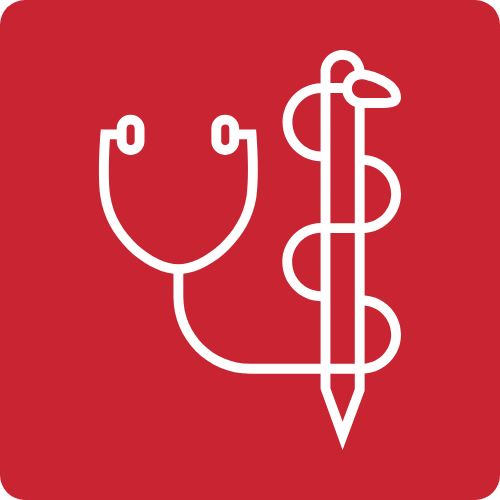The Department of Pathological Physiology and Experimental Pathology in Košice began its activities as one of the first institutions of the Faculty of Medicine of Comenius University in Košice in October 1948, later a part of P.J. Šafarik University. The institute was established and headed for 20 years (1949 to 1970) by young scientist MUDr. Rudolf Korec who arrived into Kosice from the Department of Biochemistry in Medical faculty UK, Bratislava and finished here in Košice a habilitation (1956), inauguration (1962) and gained DrSc. grade (1969). He established metabolic and diabetes research in the Department (monograph Metabolism 1955) which was later in 70ties and 80ties continues by his followers. In late 50-ties his co-workers MUDr. I. Ivančo, CSc. MUDr. J. Korpas and MUDr. Z. Tomori (both latter Assoc. prof. in 1965 and 1968) started conjointly respirology research which turned into their domain afterwards. Prof. Korec, together with his colleagues started very valuable pedagogical activity highly awarded in former Czechoslovakia. Prof. MUDr. R. Korec, DrSc. published one of the first Slovak textbooks of pathophysiology (Korec R.: Pathological Physiology, 1964; in Slovak). Fruitful results of his studies in the experimental diabetology were presented in dozens international forums over 48 countries and resulted in total 236 scientific works published in Slovak and international prints. Many of the contacts and experiences he provided to his colleagues. The principal data and methodological insights were summarized in an outstanding monograph Experimental diabetes mellitus in the rat (1967). In the 1970s and 1980s despite difficulties and low financial support, prof. Korec carried out successful transplants of the isolated Langerhans islands in Europe into a renal capsule. Both, prof. MUDr.J. Korpáš, DrSc. and prof. MUDr. Z. Tomori, DrSc. continued in the field of respiratory reflexes in Medical faculty in Martin. The most important results from their research were summarized in the renowned monograph Korpáš. J., Tomori, Z.: Cough and Other Respiratory Reflexes (1978). They became the heads of the Institutes of Physiology and Pathological Physiology, respectively, at the Jessenius Faculty of Commenius University in Martin. Prof. MUDr. I. Ivančo, CSc. became the head of the Institute of Physiology in Medical faculty of P. J. Šafárik University.

Under the lead of Doc. MUDr. J. Varga, CSc. (1970-1986) the department was focusing on methodology of teaching and education progress. There are prepared several scripta and manuals for animal practical exercises implementing audio-visual materials (MUDr. P. Dombrovský, MVDr. M. Riemerová). There was published the textbook of aetiology and pathogenesis (Varga, J., Oblyvač, J.: General Pathophysiology, 1979, in Slovak ) first of the twin books including Special Pathophysiology from Bratislava colleagues. The research activities were focused on studies of interactions between endo- & exo-secretion of the pancreas (doc. MUDr. A. Šofranková, CSc.) and clinical biochemistry of diabetes and chronic complications including glycation of proteins (doc. MUDr. O. Rácz, CSc.). The results were presented in various conferences and publications including the monograph Rácz, O. et al.: Glycohaemoglobin, Glycation of Proteins and Diabetes Mellitus (1989, in Slovak).
From 1986 to 1990 the Department was headed by prof. MUDr. Zoltán Tomori, DrSc., who brought back certain topics of respiratory research from Jessenius Medical faculty in Martin. The Department became more active in grant applications, the projects with international cooperation were initiated (prof. Tomori) and process of computerization and digitalization data acquisition and processing began (1988) (Ing. J. Čalfa, M. Kurpas). There were several research topics under investigation, e.g. the mechanisms of cardiorespiratory hypoxic failure (MUDr. R. Tkáčová, CSc.), pressure-evoked reflexes in UAW and their resuscitation potency (MUDr. V. Donič), cerebral electrophysiology of hypoxic/ischemic apnoea (MUDr. M. Jurčo, MUDr. Beňačka) and anoxia-induced disorders of respiratory rhythm and reversal by reflexes from nasopharynx and trigeminal region in animal models (MUDr. R. Beňačka). There were several fruitful long-time research stays and visits abroad (1991-1993; Germany, USA).
The head of the institute from 1990 to 1992 was doc. MUDr. A. Šofranková, CSc., who also served as Vice-Rector of P.J. Šafarik University. Department continued in educational tradition. The publication of Varga, J., Šofranková, A.: Pathophysiological Atlas (1991, in Slovak) was issued. Prof. Korec summarized the results of previous years of experimental research in Diabetes in the monograph Korec, R. : Experimental and Spontaneous Diabetes Mellitus in the Rat and Mouse (1991). The emphasis is given on improvement of teaching process. Within the framework of UPJŠ, the Department was among the first (1992) to connect to the international academic computer network EARN. In 1990-1995, for those times unique computed based technologies were implemented in the research: digital acquisition and computer–assisted evaluation of pneumotachographic data (MUDr. V. Donič, CSc, M. Kurpas), spectral analysis of EMG and EEG and continuous sequential evaluation of native and evoked brain activities during experimental hypoxia and ischemia in vivo (MUDr. R. Beňačka, CSc., RNDr. Gálik, CSc. (NFÚ SAV)).
The position of the head of the Institute of pathological physiology 1992 to 2016 was held by doc. MUDr. Oliver Rácz, CSc., who also served as vice rector of P.J. Šafárik University from 1997 to 2001. In education process, the most significant change was teaching of foreign students in English language (1995/1996). It continues until these days. Two volume scripta from General pathophysiology were prepared in English (Rácz et al.: Compendium of General Pathological Physiology I, II; 1995) and later translated into Slovak (Rácz, O. et al.: General pathological physiology, 1996). In the 90s, the institute continues in the diabetology research (prof. Korec, Doc. MVDr. F. Ništiar, CSc.) and the study of oxidative damage and total antioxidant protection (Doc. Rácz). Since the mid-90s, legislative changes have reduced practical teaching on animal models in vivo. It was gradually being replaced by seminars and tutorials using audio-visual techniques. In 1997/1998 the Dept. introduced teaching of new subject Pathobiochemistry (Doc. Rácz), which later expanded into molecular aspects of pathogenesis (Dr. Beňačka). New compulsory subject was introduced (Molecular fundamentals of pathological processes) with textbooks (2002) having been published later (Beňačka et al. & Ništiar et al.: Fundamentals of Molecular Medicine (2004, 2005; in Slovak).

In 1995-2000, thanks to experience with experimental modelling of apnoeic states and established international cooperation (ERS) and successful funding from TEMPUS grant (1995-1998; Tomori et al.) the research expanded towards the human studies in sleep apnea (prof. Tomori, Dr. Donič and Dr. Beňačka). In Košice the first of tree Sleep Laboratory in Slovakia was established and monograph from the topic was issued (Tomori, Z. et al. : Fundamentals of Sleep Medicine (1999)). In 2003, as prof. Tomori and Doc. Donič left the Department the Sleep Medicine topics and Sleep laboratory were transferred to the Depart. of Medical Physiology. Since 2004, Department started the research of chronic exposure to subtoxic doses of heavy metals in animal models (prof. Nišiar, MVDr. Lovásová, PhD and at the end of the decade MVDr. J. Nováková, PhD, Ing. Cimboláková, PhD). The study of oxidative damage and antioxidants continued (Dr. Lovásová) and was implanted in ischaemic heart studies (MUDr. Sedláková, PhD). In 2003-2012, the Department continued in the research on trigemino-vagal reflexes on autonomic responses, cardio-respiratory reactivity under the physical stress (Doc. Beňačka) and as a tool for reversal of supraventricular arrhythmias (Doc. Beňačka, Dr. Sedlákova). The teaching of pathophysiology in non – medical programmes started (Nursery, Physiotherapy, Public health). Brief textbook for these programmes was prepared, too (Rácz, O. et al.: Fundamentals of pathological physiology (2006). In 2007, after a successful accreditation, the Commission of Normal and pathological physiology for PhD thesis was established and started the work (Prof. Ništiar, guarantor; Doc. Beňačka, chairman).

In 2009, Doc. Beňačka brought new design and structure to the faculty scientific medical journal Folia Medica Cassoviensia and became the chief editor. Journal also started to publish yearly supplements of International conferences for young researchers organized by Medical faculty in Košice. In 2010, the Department hosts 18. Conference of Czech and Slovak pathophysiologists (Doc. Beňačka et al.) with CD-publication Pathophysiology 2010. Within the framework of the CEEMP project in farme of by structural funds of the EU (2010-2014) Laboratory of Applied Physiology was established (Doc. Beňačka et al.).
Since 2016 the department is headed by Doc. MUDr. Roman Beňačka, CSc.. There were introduced many changes in teaching process: e.g. demonstration practices using videopresentations and simulators, unification of the programmes and the content of subjects for Slovak and English speaking students, expansion of teaching curriculum by new subjects – Clinical pathophysiology and Molecular pathophysiology. New and modern systems of credit testing and examination were implemented too. Since 2015, the Department did cooperation in monitoring of cerebral hypoxia using non-invasive techniques (NIRS, aEEG) (MUDr. Rusnáková, PhD Doc. Beňačka) with the Department of Neonatology (MUDr. Krcho, PhD). Results were presented in the World Pathophysiology Congress in Bratislava. Diabetes research continued in several topics including the evaluation of chronic complications of diabetes mellitus, such as gastroparesis and neuropathy (MUDr. L. Šalamonová-Blichová, PhD; Doc. Rácz) and the effect of diabetes on metabolism during pregnancy incl. gestosis (MUDr. M. Brenišin, PhD, Doc Rácz).

Department also regularly and actively participates in programme committee and lectures (Doc. Rácz, Doc. Beňačka) in Annual Scientific Meetings co-organized by Slovakian diabetes society and dedicated to memory and scientific legacy of prof. Korec since 2004. Department also more tightly cooperates (Mgr. D. Szabóová) with the Institute of Experimental Medicine (RNDr. Z. Hertelyová) on issues from metabolomics, proteomics and lipidomics. In 2020 first of series of full-color illustrated textbooks was prepared and published for general medicine students (Beňačka, R. (Ed): General pathophysiology (2021, in Slovak) and by fall of 2021, second textbook Beňačka, R. et al. Pathophy¬siology for medical professionals (2022, in Slovak) was uploaded into print.
april 2022Doc. MUDr. Roman Beňačka, CSc.






